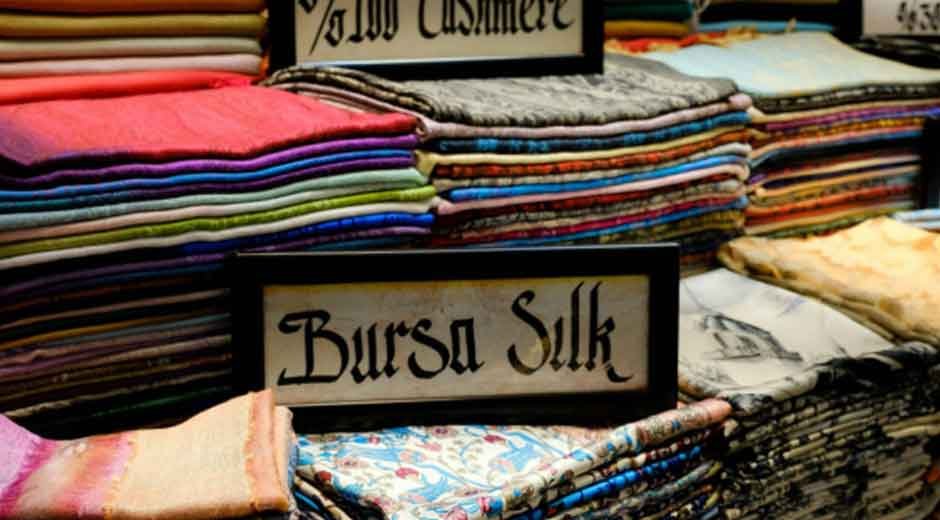- Turkish textiles combine centuries-old craftsmanship with modern design, creating timeless appeal.
- A shift toward comfort, sustainability, and quality has fueled global interest in these natural fiber products.
- Social media and celebrity influence have helped elevate Turkish textiles into lifestyle essentials.
- Versatility and heritage make them popular across fashion, travel, and interior design spaces.
Something interesting is happening in the world of fabric and fashion—not in the glossy ateliers of Paris or the minimal studios of Scandinavia, but in the ancient weaving towns of Turkey. Turkish textiles, long admired by those in the know, are suddenly everywhere. Whether it’s the cozy towel draped across your friend’s beach chair, the boho blanket thrown across an influencer’s bed, or the soft robe you spotted in a boutique hotel, these subtly luxurious pieces have gone from niche to need-now.
So why now? What is it about these woven wonders that has made them pop into the global spotlight? The answer lies in a perfect storm of tradition, craftsmanship, aesthetic minimalism, and a cultural shift toward all things natural, sustainable, and slow. Turkish textiles aren’t just trendy—they’re timeless. And that’s precisely what makes them so irresistible.
Centuries of Craftsmanship and Culture
To understand why Turkish textiles are suddenly front and center, you’ve got to look back—way back. Turkey has been a global hub of textile production for centuries. Some of the world’s oldest weaving traditions originated here, with skills passed down through generations in family-run workshops across the country.
The secret? A deep respect for the process. Traditional Turkish weaving isn’t just about making cloth—it’s about telling a story. These textiles often begin with premium, locally grown cotton, which is hand-spun and dyed using natural methods. The looms—sometimes wooden and creaky—are operated by artisans who treat each thread as if it matters, because it does.
But while the heritage runs deep, Turkish textiles are anything but outdated. What makes them special is their ability to evolve. The classic hammam towel, for example, has transformed from a spa essential into an everyday luxury, reimagined in new patterns, colors, and even hooded versions for modern use. It’s this balance between authenticity and adaptability that has kept these textiles relevant, even as trends shift around them.
A Global Obsession With Everyday Comfort
Let’s face it: we’re all craving a little more comfort these days. Whether it’s the rise of loungewear, the obsession with cozy home spaces, or the push toward more mindful, slower living, comfort is in. And that’s precisely where Turkish textiles come in.
They’re soft. They’re lightweight. They breathe. And unlike synthetic blends that often feel too clingy or too stiff, Turkish cotton and linen have this magical ability to get softer the more you use them. It’s no wonder that people everywhere have fallen hard for pieces that feel good and look effortlessly stylish at the same time.
One standout example of this trend is the recent surge in popularity of comfy hooded Turkish beach towels. These towels are no longer just for the beach; they’ve become a go-to for everything from post-shower lounging to picnics in the park and even chilly outdoor evenings. They’re practical yet chic, and because they dry quickly and pack light, they’ve become a travel favorite as well.
What’s driving this obsession isn’t just utility—it’s lifestyle. People are ditching disposable trends and leaning into quality. They want fewer things, better things. Turkish textiles offer just that: a fusion of functional beauty, cultural heritage, and modern-day ease. In an increasingly digital and fast-paced world, wrapping yourself in something thoughtfully made feels like a small rebellion—and a much-needed one at that.
Celebrity Endorsements and Social Media Trends
Of course, no trend truly takes off without a bit of help from the internet, and Turkish textiles are no exception. Scroll through Instagram or TikTok, and you’ll spot Turkish towels draped over beach loungers in Tulum, stacked artfully in minimalist bathrooms, or worn as chic wraps by influencers with perfectly tousled hair. These textiles aren’t just being used—they’re being shown off.
That’s partly because they photograph beautifully. Their natural texture, muted tones, and effortless vibe strike the perfect balance between curated and casual. You know the look: a breezy towel hanging off a vintage hook or casually slung across a sun-warmed shoulder. It’s aspirational but still accessible.
And then there are the celebrity endorsements. From beach-loving stars to eco-conscious home decorators, numerous high-profile individuals have adopted Turkish textiles as part of their laid-back, luxurious lifestyle. Some even collaborate with artisans or boutique brands to create custom pieces that blend traditional techniques with modern design.
It’s not just about the look, though—it’s about what these items represent. In a digital world dominated by fast trends and fleeting aesthetics, Turkish textiles offer something grounded. They speak to craftsmanship, sustainability, and quality, which is precisely what conscious consumers—and their followers—are now demanding. That emotional connection makes all the difference.
From the Hammam to Your Home
While Turkish towels may have started in the steamy marble rooms of hammams, they’ve quietly made their way into almost every part of modern life. And it’s not hard to see why. These pieces are wildly versatile.
Yes, they’re perfect for post-swim or bath use, but their uses stretch far beyond. Toss one over a sofa arm for an instant texture boost. Lay it across your bed for a casual, lived-in look that still feels intentional. Use one as a lightweight travel blanket, a picnic throw, or even a minimalist wall hanging. Turkish textiles have become the ultimate home accessory, blending functionality with style in a way that’s hard to beat.
Interior designers have also noticed. Turkish throws and towels are often featured in design magazines and mood boards, often paired with natural woods, neutral palettes, and layered linens. They add just the right amount of softness and warmth without overwhelming the space.
What’s especially cool is how well they work across different aesthetics. Whether your vibe is coastal boho, Scandinavian calm, or desert chic, there’s a Turkish textile that suits your style without trying too hard. That quiet confidence is part of their charm—they don’t scream for attention, but they always elevate the scene.
And let’s not forget the cultural story they carry. Every time you use one, you’re connecting with a tradition that spans generations. It’s home decor with heritage, which makes the comfort they provide feel even deeper.
How to Choose Quality Turkish Textiles
If you’re ready to incorporate this trend into your home or wardrobe, knowing what to look for is key. Not all textiles labelled “Turkish” are created equal. With the popularity boom, there has been a rise in mass-produced imitations that lack the quality and integrity of the genuine article.
Start with the material. Authentic Turkish textiles are typically made from 100% Turkish cotton, which is known for its long fibers. Longer fibers mean fewer joins, which results in a smoother, stronger, and more durable fabric. These pieces actually get softer and more absorbent over time—they do not wear out after a few washes.
Another major factor is the weave. Flat-woven styles, like those used for hammam towels, are lighter and more versatile, perfect for layering or travel. Looped or plush styles might offer more traditional towel thickness, but both have their place, depending on your personal preference.
Ethical production is also becoming increasingly important. Many small Turkish brands are committed to sustainable practices, from organic farming to fair wages for artisans. Look for labels that are transparent about their sourcing and manufacturing process—these are the ones preserving the craft, not just profiting from it.
And a quick note on care: these textiles are made to last, but they’ll love you back if you treat them right. Skip the fabric softener, go gentle on the heat, and let them air dry whenever possible. With just a little attention, they’ll stay in your life (and your linen closet) for years to come.
Conclusion
The rise of Turkish textiles isn’t just a passing trend—it’s a reflection of where design and lifestyle preferences are heading. In a world increasingly drawn to authenticity, comfort, and craftsmanship, these beautiful, time-tested pieces offer something that feels both fresh and familiar.
Whether draped over a chair, wrapped around your shoulders, or folded neatly beside the bath, they add a touch of something grounded and intentional. And in today’s fast-paced culture, that’s more than just stylish—it’s meaningful.










